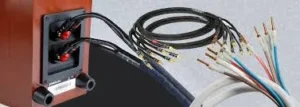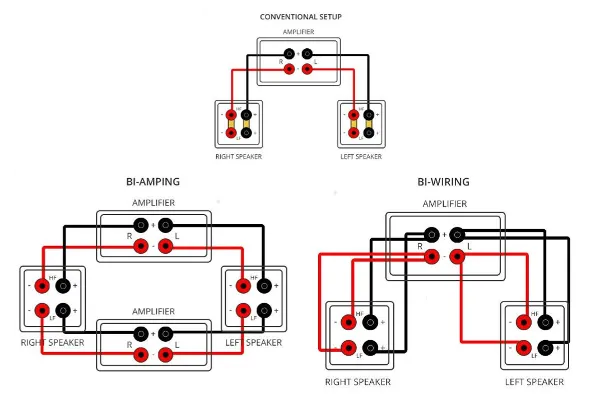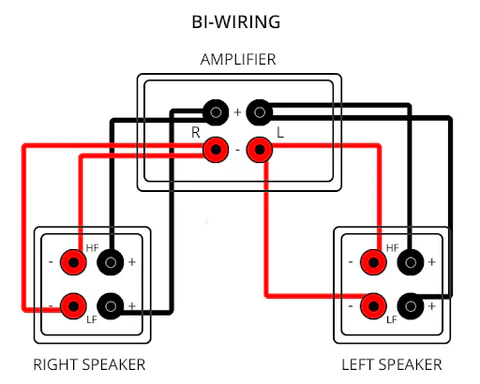In the world of audio equipment, the terms “bi-amp” and “bi-wire” are often thrown around when discussing how to enhance sound quality and speaker performance. Many audio enthusiasts and home theater fans wonder which option is best for their needs. The bi-amp vs bi-wire Panasonic debate is an important one, especially when considering Panasonic’s high-quality audio products.
Understanding the key differences between these two setups can help you make an informed decision when setting up your audio system. In this article, we’ll explore both bi-amping and bi-wiring, discuss their advantages, and see how Panasonic fits into these concepts.
What is Bi-Wiring?
Before diving into the bi-amp vs bi-wire Panasonic debate, it’s essential to understand what bi-wiring is. Bi-wiring refers to the practice of using two separate speaker cables for each speaker—one for the low-frequency (woofer) section and one for the high-frequency (tweeter) section. This setup is commonly found in higher-end speaker models, and it’s designed to improve the separation between the frequencies.
How Does Bi-Wiring Work?
In bi-wiring, each speaker has two sets of terminals: one for the high frequencies and one for the low frequencies. The speaker cables are split, with one pair going to the high frequencies and another pair going to the low frequencies. This setup minimizes interference between the frequencies, which can improve clarity and overall sound quality.
Advantages of Bi-Wiring
- Improved Sound Quality: By separating the low and high frequencies, bi-wiring reduces the chance of distortion caused by interference between the two.
- Better Frequency Control: It helps speakers perform at their best, as each frequency range gets its dedicated connection.
- Less Signal Loss: The dedicated paths for each frequency reduce the chances of signal degradation, especially in higher-end setups.
But here’s the catch: Bi-wiring doesn’t increase the overall power going to the speaker. It only helps in creating a cleaner signal path for each frequency range.

What is Bi-Amping?
Now, let’s talk about bi-amping, which is a more complex setup compared to bi-wiring. Bi-amping involves using two amplifiers—one for the low frequencies (woofer) and another for the high frequencies (tweeter). Each speaker will be connected to two separate amplifier channels, providing more power to each section.
How Does Bi-Amping Work?
Bi-amping uses the same principle as bi-wiring, but with an added amplifier for each frequency range. For example, an amplifier could power the woofer, and another amplifier could power the tweeter. This setup is designed to enhance the overall power and clarity of the sound by reducing the load on each amplifier and speaker driver.
Advantages of Bi-Amping
- Increased Power: Bi-amping provides more power to the speakers by using two amplifiers, which can deliver clearer sound, especially at higher volumes.
- Better Control Over Frequencies: Because each amplifier is dedicated to a specific frequency range, there’s less chance of distortion.
- Reduced Stress on Each Amplifier: Since each amplifier handles a specific range of frequencies, it doesn’t have to work as hard, which can prolong the life of the equipment.
While bi-amping requires more equipment and setup, the additional power can make a significant difference in sound performance, especially for audiophiles seeking the best quality.
Bi-Wire vs Bi-Amp: Which is Better for Your Panasonic Setup?
When it comes to bi-amp vs bi-wire Panasonic, the decision depends largely on your needs, the type of equipment you own, and your overall goals for sound quality. Let’s break it down further to help you make the best choice.
Bi-Wire Panasonic Setup
If you’re using a Panasonic audio system or speakers designed for bi-wiring, this setup can improve the overall sound quality. Bi-wiring Panasonic speakers can reduce signal loss and improve clarity. This option is a great starting point for those who want to enhance the sound without making a huge investment in extra equipment.
Advantages of Bi-Wiring with Panasonic Speakers:
- Cost-Effective: Bi-wiring typically requires fewer components than bi-amping, making it a more budget-friendly choice.
- Improved Sound Without Extra Gear: By simply using two sets of speaker cables, you can still achieve better performance in terms of separation between high and low frequencies.
- Easy to Set Up: Bi-wiring is less complicated than bi-amping. You only need to connect your speaker cables correctly, and you’re done.
Bi-Amp Panasonic Setup
For those who are serious about their audio setup, bi-amping Panasonic speakers can deliver a superior listening experience. Bi-amping allows you to take full advantage of the potential of Panasonic’s amplifiers and speakers by providing more power and better frequency control.

Advantages of Bi-Amping with Panasonic Speakers:
- More Power: If you have a high-end Panasonic speaker system and amplifier, bi-amping allows you to unleash the full power of both, creating a more dynamic sound.
- Precision and Clarity: With bi-amping, you have more control over the high and low frequencies, resulting in cleaner sound with less distortion.
- Better for High-End Equipment: If you’ve invested in premium Panasonic speakers and amplifiers, bi-amping can help you get the most out of your gear.
However, bi-amping comes with a few drawbacks. It requires additional equipment—another amplifier and more cables. This can be more expensive and time-consuming to set up. Plus, not all speakers are designed for bi-amping, so you’ll need to check if your Panasonic speakers support it.
The Role of Panasonic in the Bi-Wire vs Bi-Amp Debate
Panasonic has long been a leader in audio technology, producing high-quality amplifiers, speakers, and home theater systems. Their products are known for reliability and clarity, making them an excellent choice for both bi-wire and bi-amp setups.
- Bi-Wire Panasonic Speakers: Many Panasonic speakers are designed with bi-wire capability, allowing users to take advantage of the cleaner signal path that bi-wiring provides. These speakers are ideal for audiophiles who want a simple yet effective way to enhance sound quality without adding extra amplifiers.
- Bi-Amp Panasonic Speakers: For those who want to get more power and precision from their Panasonic system, bi-amping is a great option. Some Panasonic speakers are optimized for bi-amping, and using two amplifiers to drive different frequency ranges can deliver significantly better sound, especially at higher volumes.

Conclusion
The bi-amp vs bi-wire Panasonic debate ultimately comes down to what you want to achieve with your audio setup. If you’re looking for a simple way to improve sound quality and clarity, bi-wiring is a great option. It’s cost-effective and easy to set up. On the other hand, if you’re ready to invest in more power and precision, bi-amping can provide a higher level of performance.
With Panasonic’s high-quality audio products, both bi-wiring and bi-amping offer distinct advantages. Which option will best suit your needs and elevate your listening experience?



